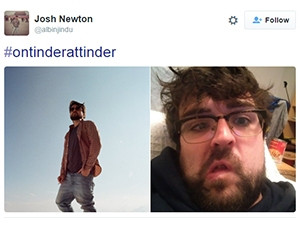
A new Twitter trend sees users mocking the fakery of online dating profiles by posting their Tinder pictures alongside more realistic photos of themselves.
The hashtag "#OnTinderAtTinder" is derived from the phrase "How I look on Tinder vs How I look at Tinder", and mocks both the differences between users' Tinder pictures and their everyday appearances, and their experiences of amusement or horror with the app.
While the hashtag has spawned goofy selfies and joking pop culture references alike, it draws attention to the issues surrounding how easy it is to assume a false identity on dating apps and Web sites, or even to present a warped version of oneself by posting outdated or heavily-edited photographs.
Confirmation layer
New matchmaking app Blume is savvy to this threat, and integrates Snapchat-like real-time selfies into its interface to help users confirm one another's true identities.
Much like Tinder, Blume lets users choose a picture of themselves to use as their avatar, which it then shows to other users nearby in order to initiate matches.
When two users "like" one another's avatars, the app then insists they exchange real-time selfies in order to confirm they are the person represented in their avatar. Much like Snapchat, the selfies disappear after seven seconds, and users can overlay them with text.
Yet the privacy of Blume's disappearing selfies is a step up from that of Snapchat's. If a Blume user takes a screenshot of another user's ephemeral selfie, they are banned from the app for two hours. Taking screenshots after this will result in a seven-day and a 30-day ban respectively. Users are banned from the app permanently when they have taken four screenshots.
Share